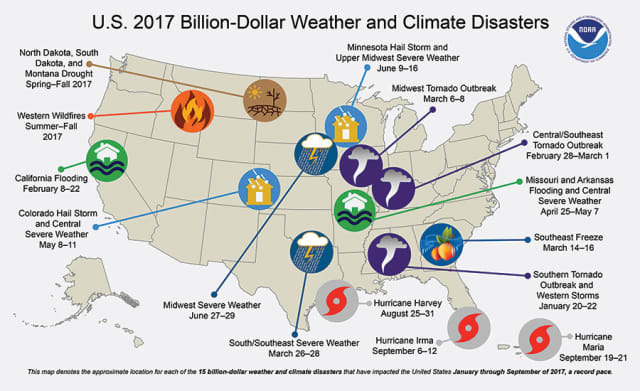After a summer full of record-breaking temperatures, wildfires and tropical storms, there is no longer any doubt that anthropogenic climate change is already impacting our global ecosystem and life on the planet. The U.N. Intergovernmental Panel on Climate Change (IPCC) warned that civilization has less than 12 years to cut emissions by 45 percent in order to keep Earth habitable to humans and other life-forms.

The cost of natural disasters in the U.S. in 2017. (Image courtesy of NOAA.)
Reducing emissions by such levels obviously will require a massive change to our current fossil fuel-based global infrastructure. In an attempt to address the United States’ own role in contributing to emissions, Rep. Alexandria Ocasio-Cortez of New York and Sen. Ed Markey of Massachusetts released an initial resolution to define the scope of a “Green New Deal,” a framework meant to simultaneously restructure the U.S. energy system while also addressing poverty in the country on a scale similar to the New Deal of the 1930s.
That 14-page document outlined a number of objectives, including the reduction of emissions by 40 to 60 percent by 2030 and down to zero by 2050. It also raised a number of questions, such as how the U.S. would pay for the program, what energy policies would or wouldn’t be included, and how to account for a projected loss of jobs in the oil and gas sector.
The fact that climate change needs to be addressed—and as quickly as possible—may render…

